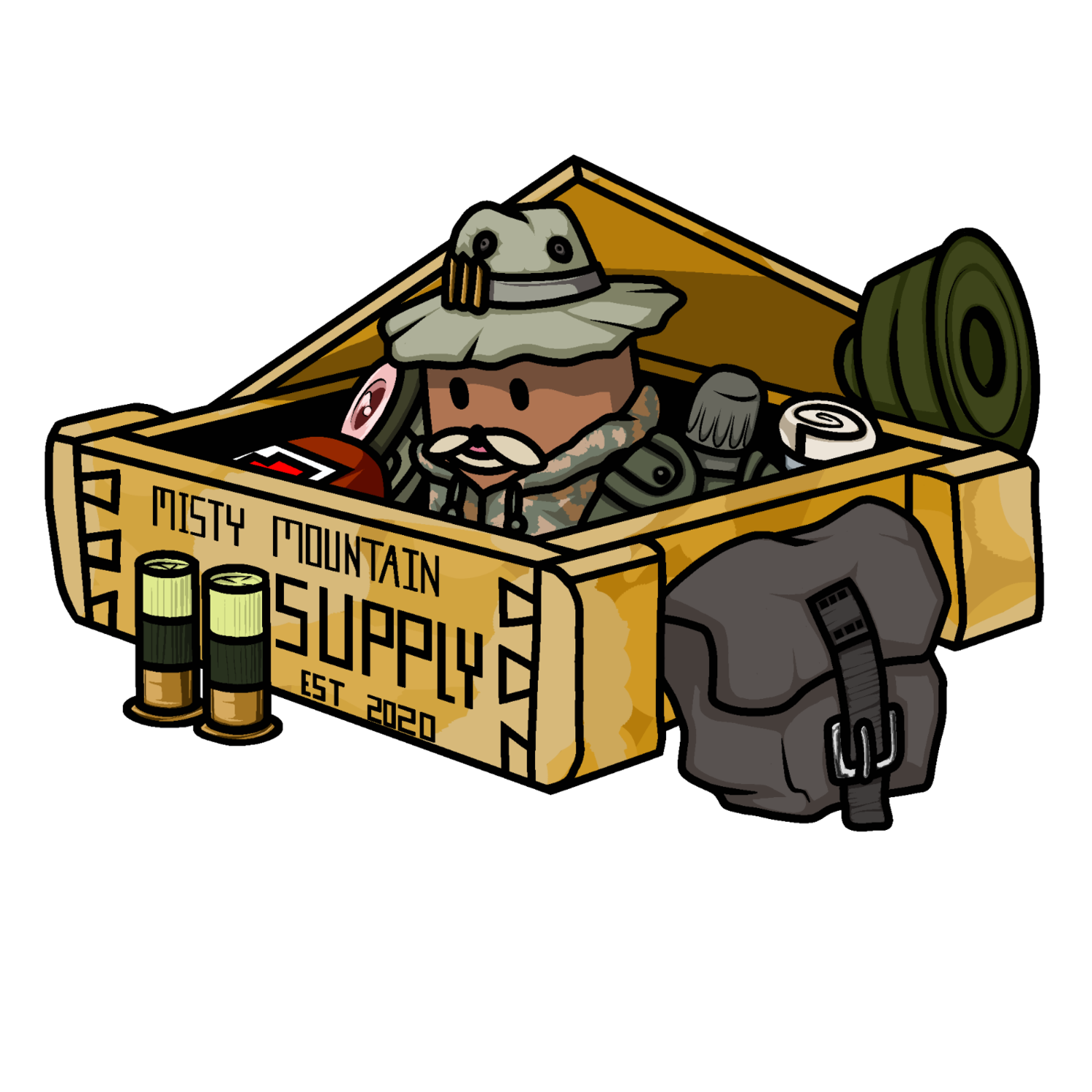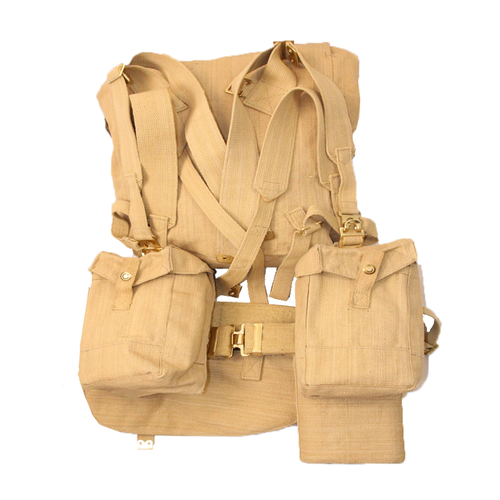 Image 1 of 4
Image 1 of 4

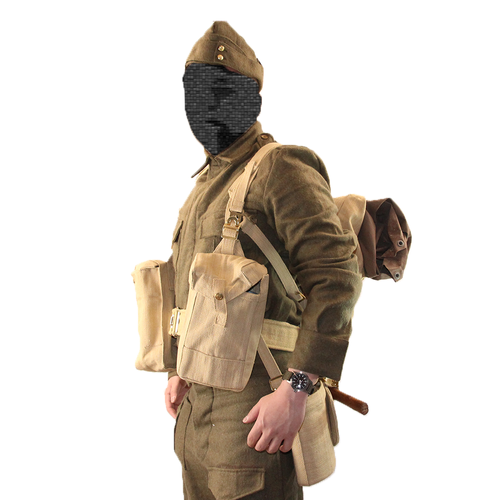 Image 2 of 4
Image 2 of 4

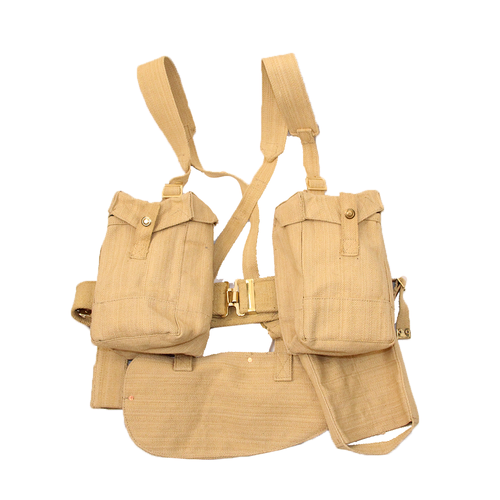 Image 3 of 4
Image 3 of 4

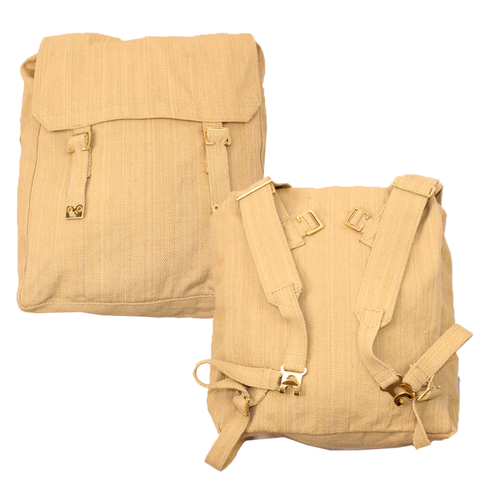 Image 4 of 4
Image 4 of 4





Reproduction Canadian Pattern 37 Webbing
Pattern 37 that’s affordable!
Features:
Webbing Belt x1
Where you attach your pouches!
Webbing Straps x2
These do exactly what you think, hold your webbing up.
Basic Pouch x2
Typically, two Bren gun magazines were carried in each pouch, but a pair of 2-inch mortar bombs would also fit. Sten gun magazines would not fit properly, but the pouches were also used for these. Riflemen would also carry bandoliers of rifle ammunition and grenades in the basic pouches. Men not in infantry units received cartridge carriers until midway through the war, when the cartridge carriers were replaced by the basic pouch for men of all arms.
Haversack x1
The haversack, or "small pack", could be worn suspended on the brace ends below the waist, as was done in full marching order, or worn on the back with the addition of a pair of "L" shaped straps (which were interchangeable with the Large Pack. The haversack was originally intended to carry the water bottle and mess tin (and had internal pockets for same) though these were often worn outside the haversack in web carriers, especially by infantrymen. The haversack was used to carry necessities for a 24 hour period; photo at right (courtesy Ed Storey) shows some typical contents, including white towel, sweater, wool shirt, water bottle, mess tin, knife/fork/spoon, spare socks, rations, and shaving holdall. Other contents might include cleaning kit, polishing kit, housewife, iron ration, or spare ammunition. As well, the groundsheet was carried by regulation in the haversack and tucked under the flap. In action, it was often left with personal kit in the unit baggage, and the rain cape substituted as a waterproof garment, despite repeated orders not to undertake that practice.
Pattern 37 that’s affordable!
Features:
Webbing Belt x1
Where you attach your pouches!
Webbing Straps x2
These do exactly what you think, hold your webbing up.
Basic Pouch x2
Typically, two Bren gun magazines were carried in each pouch, but a pair of 2-inch mortar bombs would also fit. Sten gun magazines would not fit properly, but the pouches were also used for these. Riflemen would also carry bandoliers of rifle ammunition and grenades in the basic pouches. Men not in infantry units received cartridge carriers until midway through the war, when the cartridge carriers were replaced by the basic pouch for men of all arms.
Haversack x1
The haversack, or "small pack", could be worn suspended on the brace ends below the waist, as was done in full marching order, or worn on the back with the addition of a pair of "L" shaped straps (which were interchangeable with the Large Pack. The haversack was originally intended to carry the water bottle and mess tin (and had internal pockets for same) though these were often worn outside the haversack in web carriers, especially by infantrymen. The haversack was used to carry necessities for a 24 hour period; photo at right (courtesy Ed Storey) shows some typical contents, including white towel, sweater, wool shirt, water bottle, mess tin, knife/fork/spoon, spare socks, rations, and shaving holdall. Other contents might include cleaning kit, polishing kit, housewife, iron ration, or spare ammunition. As well, the groundsheet was carried by regulation in the haversack and tucked under the flap. In action, it was often left with personal kit in the unit baggage, and the rain cape substituted as a waterproof garment, despite repeated orders not to undertake that practice.
